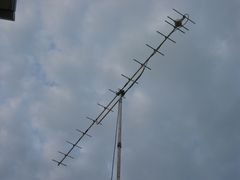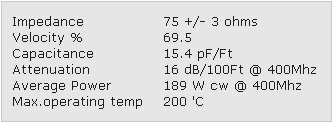You can also notice on the
photos below that I used UHF coaxial connectors in the antenna box. This is bad
example and you should always avoid this UHF connectors on the frequencies 432
Mhz and above. Amphenol stated that the maximum operating frequency is 300 Mhz
with unstable impedance, so they are not good for the 432 Mhz. Instead, I
recommend the N type connector which is good for this purpose, watertight,
stable 50 ohm impedance and low loss on this frequencies. (Loss (dB) = 0.05 x f
(Ghz)). They are handling even more power and you can run your legal limit power
on this band too. The only limitation factor for running the high power is the
coaxial cable that we are going to use for the matching section. Limit power for
the RG-179 is 189 W continuous @ 400Mhz. As we are using two pieces connected in
parallel so the maximum power can be around 380 watts. I test my antenna in the
contest with 350 watts and no problems found at all. SWR was stable.
At the
end, just one more hint, do not forget to ground the coaxial N connector on the
dipole side. You can notice on the photos a small L aluminum profile grounding
the N connector with the screw going through the plastic antenna box to the
boom.





